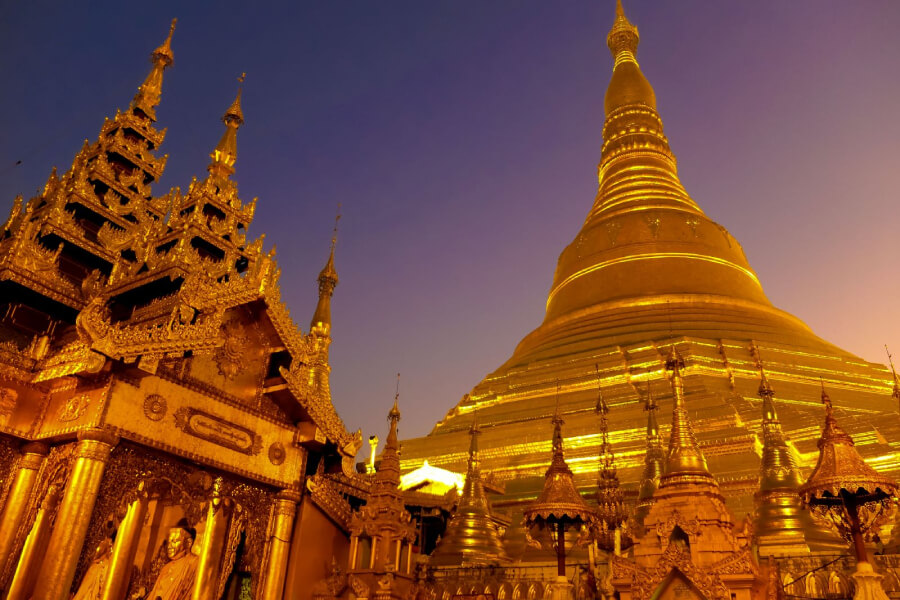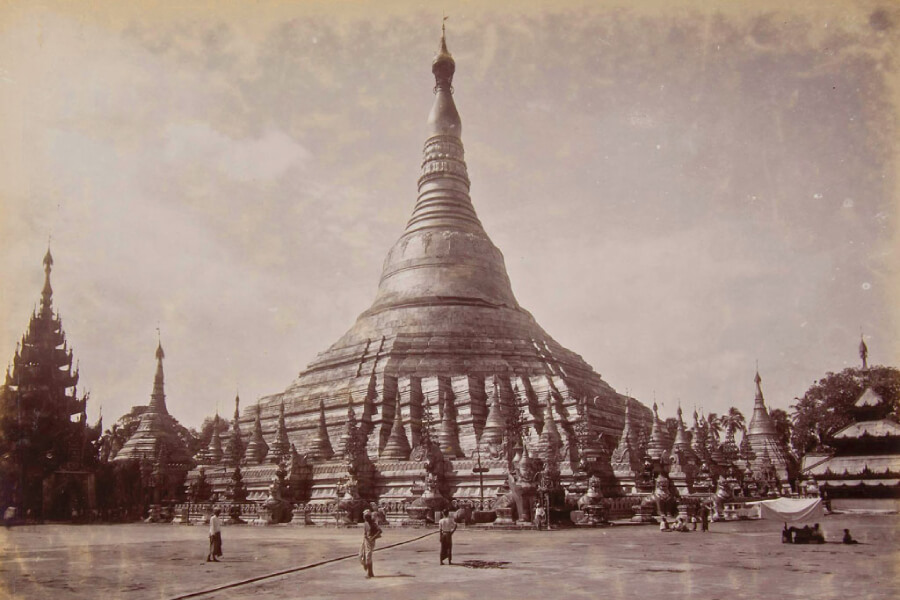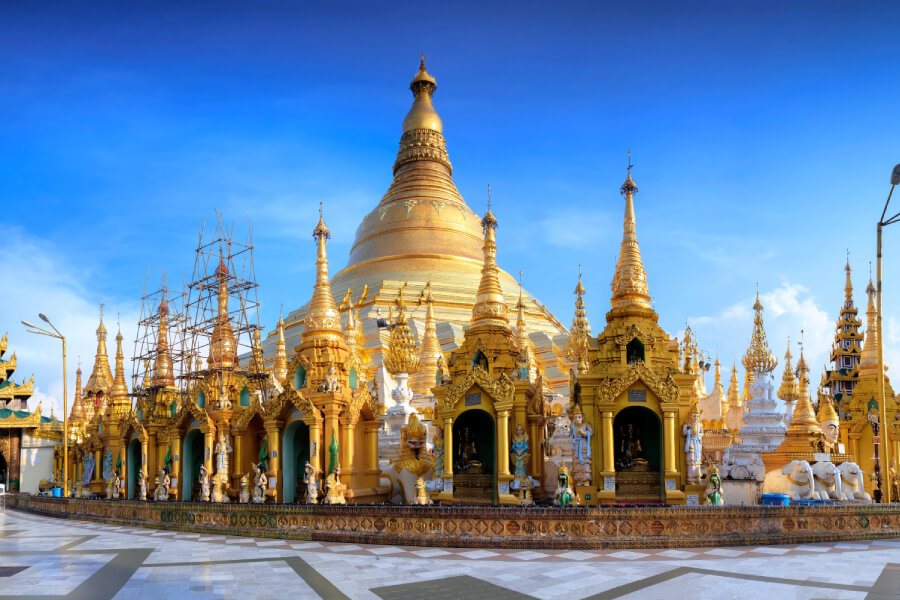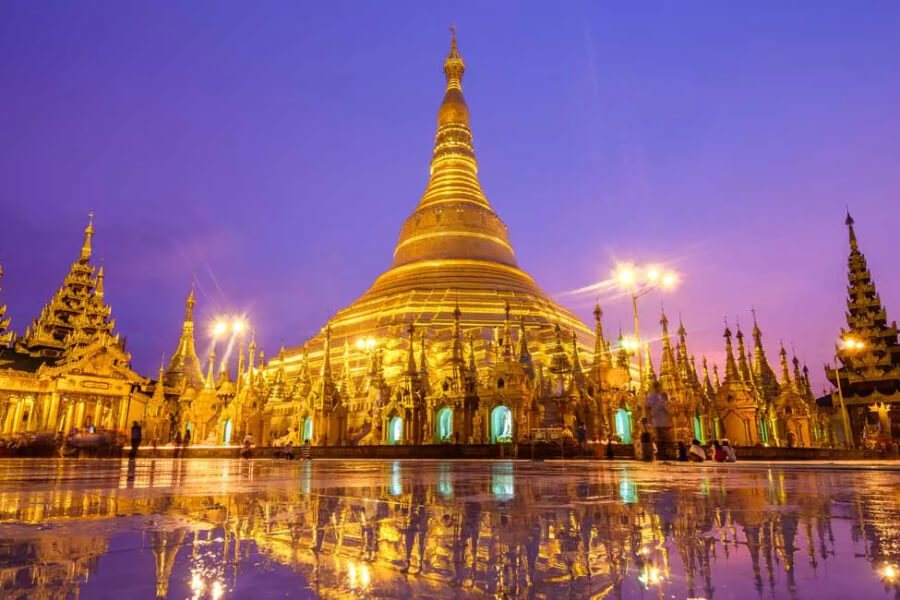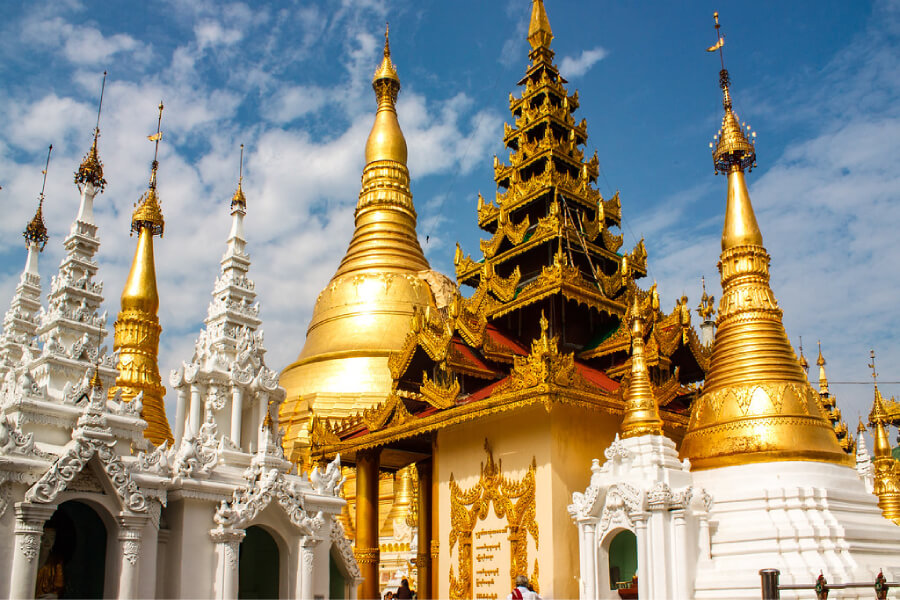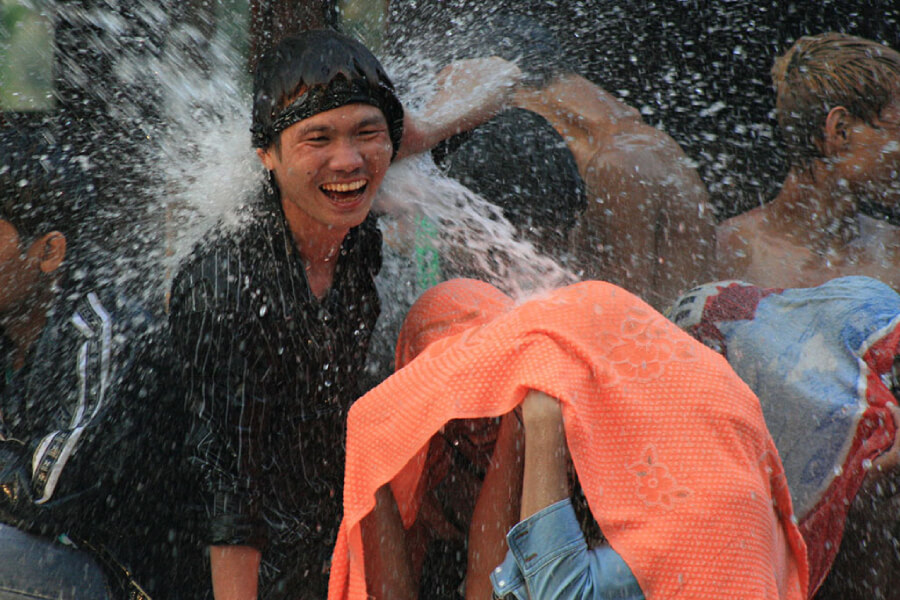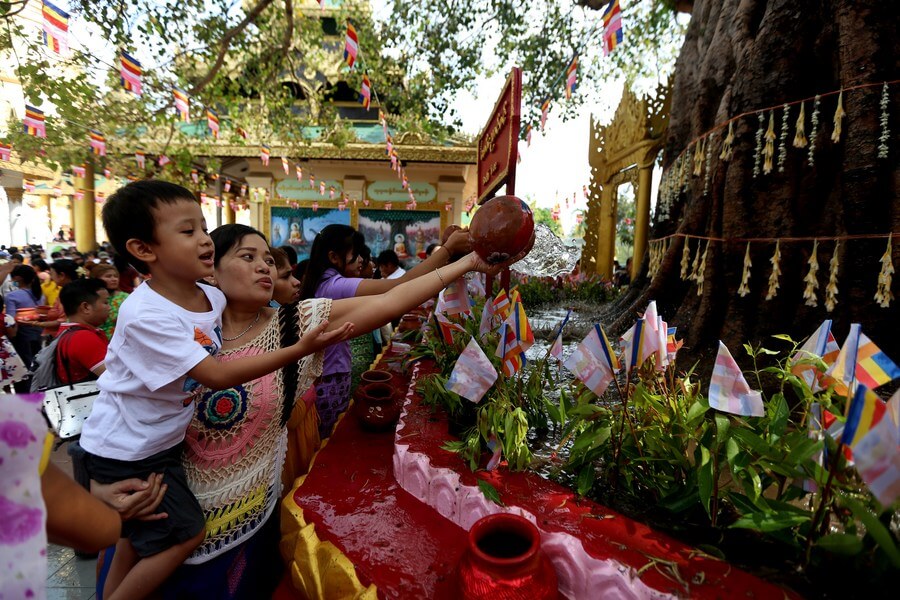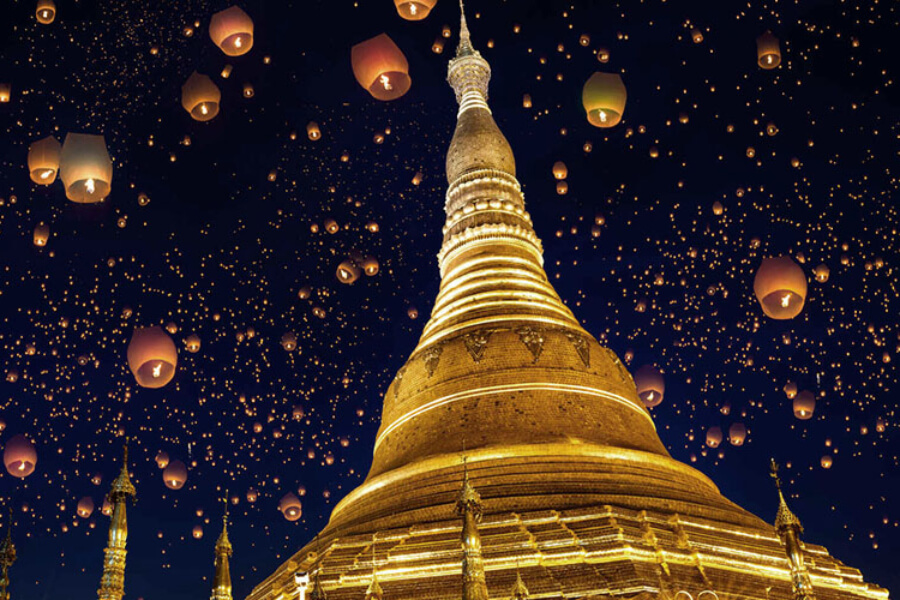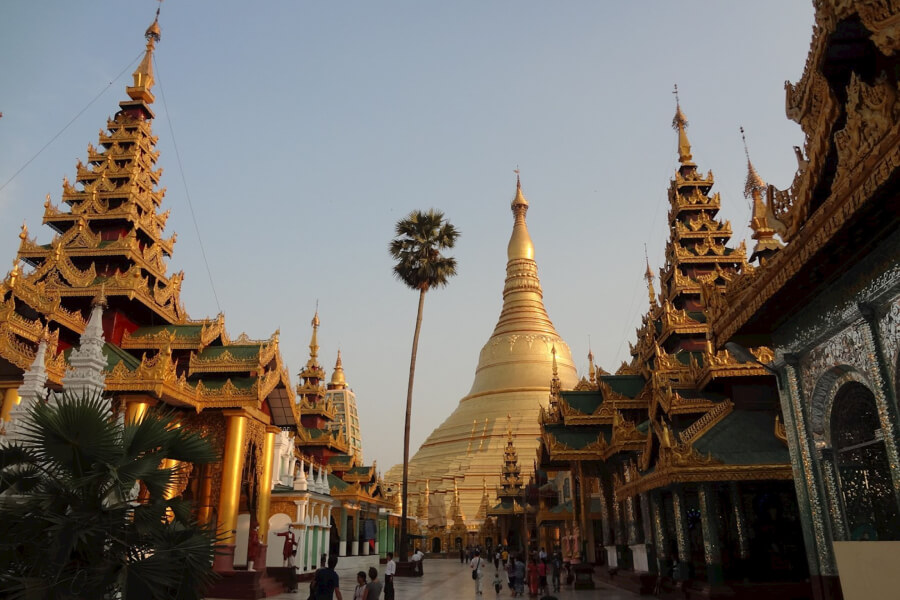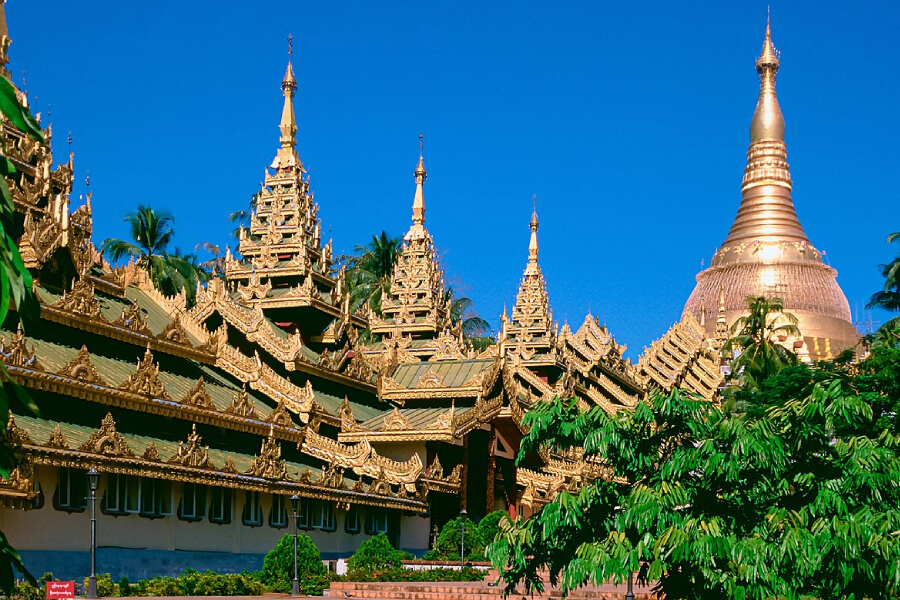The Shwedagon Pagoda, perched atop Singuttara Hill in Yangon, Myanmar, is an iconic and sacred religious site. It stands as a symbol of Myanmar’s rich history, spirituality, and architectural grandeur. Whether planning a pilgrimage, seeking architectural inspiration, or simply curious about its allure, this guide is the key to unlocking the marvels of this golden jewel in Myanmar and an essential resource for those interested in Myanmar tours.
Shwedagon Pagoda’s Fascinating History
The history of Shwedagon Pagoda is shrouded in myth and legend. According to local lore, two merchant brothers, Tapussa and Bhallika, met the Lord Gautama Buddha himself. They received eight of his hair strands as a relic, which they brought to Myanmar. These sacred relics are believed to be enshrined at the heart of the Shwedagon Pagoda, making it one of the most revered Buddhist stupas globally. The mythical beginnings of the pagoda tie it directly to the origins of Buddhism and to the Buddha’s teachings.
The enduring allure of Shwedagon Pagoda is its remarkable age. Historical records suggest that the pagoda was first constructed during the reign of the Mon Queen Shinsawbu in the 2nd century BC. This makes Shwedagon one of the oldest pagodas in the world, with a history that spans centuries of cultural and religious transformations. It has witnessed the rise and fall of empires, the spread of Buddhism across the region, and the enduring faith of countless generations.
Over the centuries, the Shwedagon Pagoda has undergone multiple renovations and facelifts, each adding to its splendor. The evolution of its architectural style reflects the history and influence of different dynasties, from the Mon and Bagan periods to the present day. This dynamic evolution is a testament to Myanmar’s rich history. It has absorbed the architectural essence of each era, evolving into the magnificent structure we see today.
The pagoda’s history is marked by various periods of rise and decline. It has been subject to multiple invasions and destructions, but it has always been rebuilt, often grander than before. This resilience is a testament to the deep spiritual and cultural significance the Shwedagon Pagoda holds for the people of Myanmar. It stands as a symbol of strength and determination, echoing the enduring faith and commitment of the Burmese people to their heritage.
During the colonial period, the British showed a renewed interest in the pagoda, conducting extensive renovations in the late 19th century. This marked a turning point in the history of the pagoda, as it became more accessible to the global community, gaining recognition and appreciation worldwide. The British not only restored its physical grandeur but also helped introduce it to the world, making it an iconic symbol of Myanmar’s cultural heritage.
The Architectural Marvel of Shwedagon Pagoda
The design of the Shwedagon Pagoda is a visual masterpiece. Its complex structure consists of a central stupa, surrounded by numerous smaller stupas, shrines, and pavilions. The central stupa, reaching a towering height of 99 meters, is covered in over 27 metric tons of pure gold leaf. This gold exterior is studded with thousands of precious stones, including diamonds, rubies, and sapphires, creating a visual spectacle that shimmers and radiates in the sunlight. The pagoda’s design is a perfect blend of architectural and spiritual elements, with each detail holding profound significance, making it a must-visit destination for those interested in Myanmar packages.
The gold plating of the Shwedagon Pagoda goes beyond aesthetics; it is deeply rooted in the teachings of Buddhism. The gold symbolizes the purity of the Buddha’s teachings and the enlightenment that can be attained through practicing these teachings. As visitors gaze upon the golden exterior, they are not only treated to a breathtaking sight but also reminded of the spiritual depth and wisdom embedded within this magnificent architectural gem.
The central stupa of the Shwedagon Pagoda serves as the focal point of the entire complex. Within it are enshrined relics of Gautama Buddha, including eight hair strands. The spire of the stupa is adorned with intricate ironwork and crowned by a stunning hti, or umbrella, encrusted with precious jewels. The hti represents the ultimate achievement of enlightenment and the path to Nirvana. It’s a symbol that goes beyond architectural ornamentation; it carries the weight of profound spiritual significance.
The Shwedagon Pagoda is not just an isolated structure; it is the centerpiece of a vast architectural complex that includes numerous shrines, prayer halls, and statues. This intricate network of buildings and monuments creates a cultural hub where pilgrims and tourists alike can immerse themselves in Myanmar’s rich spiritual heritage. The architectural diversity within the complex highlights the evolution of architectural styles and the enduring importance of this site.
In recent years, modernization efforts have been underway to preserve and enhance the Shwedagon Pagoda. The installation of an elevator, for example, has made this architectural wonder more accessible to individuals of all ages and abilities, ensuring that its grandeur is maintained while ensuring its accessibility for generations to come.
Celebrating Tradition: The Vibrant Cultural Festivals of Shwedagon Pagoda
The cultural festivals held at the Shwedagon Pagoda offer an opportunity to delve into the heart of Myanmar’s cultural identity, where tradition, spirituality, and unity converge in a spectacular display of celebration.
These festivals, deeply rooted in Myanmar’s cultural fabric, are not isolated events but a series of joyous occasions that mark the passage of time in accordance with the Buddhist lunar calendar. The full moon celebrations, in particular, offer a monthly reminder of the country’s spiritual heritage. On these sacred nights, the pagoda comes alive with the soft glow of thousands of oil lamps, illuminating the faithful as they make offerings and participate in prayers. These celebrations serve as a reminder of the profound influence of Buddhism in Myanmar and its enduring significance.
Among the most eagerly anticipated festivals in Myanmar is Thingyan, the traditional New Year Water Festival. At the Shwedagon Pagoda, Thingyan is a grand celebration that goes beyond the confines of religious observance. It marks the Burmese New Year with exuberant water fights, symbolizing the cleansing of the old year’s troubles and the welcoming of a fresh start. Pilgrims, locals, and visitors alike engage in spirited water battles, filling the air with laughter and joy.
Kason, the Watering Festival, offers a unique glimpse into Myanmar’s spiritual customs. During this festival, the pagoda’s sacred Bodhi trees are watered to commemorate the Buddha’s enlightenment. This act of watering the trees is considered a meritorious deed, emphasizing the importance of virtuous actions and religious observance. It’s a serene yet significant festival that resonates with the country’s deep-rooted traditions.
The Tazaungdaing Festival, also known as the Festival of Lights, is a sight to behold. The Shwedagon Pagoda becomes adorned with countless colorful lanterns during this celebration, creating a mesmerizing display of lights that illuminates the night. Additionally, during the Tazaungdaing Festival, pilgrims participate in a procession called “Kathina,” where they carry offerings of robes and other necessities for the monks. This act of generosity echoes the importance of community and giving in Myanmar’s cultural and spiritual values.
These festivals go beyond religious significance; they are showcases of Myanmar’s artistic and cultural diversity. Traditional dances, music performances, and processions highlight the nation’s unique heritage. Visitors have the opportunity to witness Myanmar’s rich tapestry of customs and traditions in full display.
The beauty of these festivals lies not only in their individual significance but in their capacity to unite Myanmar’s diverse communities. Buddhists from various traditions, as well as people from other faiths, come together to participate in these celebrations. It’s a reflection of Myanmar’s spirit of harmony and coexistence, where cultural and religious diversity are not barriers but bridges connecting people.
Visiting Tips and Practical Information in Shwedagon Pagoda
Opening Hours
The Shwedagon Pagoda is open every day of the week from 4 AM to 10 PM. The last admission is at 9:45 PM, allowing visitors to experience the pagoda’s beauty both during the day and at night.
Visiting Tips
Dress Modestly: When visiting Shwedagon Pagoda, it’s essential to dress modestly and respectfully. This means wearing clothing that covers your shoulders and knees. Remember that this is a religious site, and dressing appropriately is a sign of respect.
Footwear Etiquette: Remove your shoes and socks before entering the pagoda’s main platform. There are designated areas for storing your footwear. Bring a bag to carry your shoes, and wear easy-to-remove footwear to make this process smoother.
Respect the Rituals: Observe the local rituals and customs at the pagoda. It’s common to see visitors circling the main stupa clockwise, offering prayers, and lighting candles and incense. While you’re not required to participate, it’s a good idea to be respectful and unobtrusive when observing these practices.
Photography and Videography: This is allowed at Shwedagon Pagoda, but there may be restrictions in certain areas. Be mindful of the signs and guidelines related to photography, and always ask for permission before photographing or recording people.
Peace and Quiet: Shwedagon Pagoda is a place of worship and reflection for many. Please maintain a peaceful and quiet demeanor during your visit. Refrain from loud conversations, and turn off your mobile phone or set it to silent mode.
Currency for Offerings: You may wish to make offerings at the pagoda, such as lighting candles or purchasing flowers. It’s a good idea to carry some local currency (Myanmar Kyat) for this purpose.
Weather Considerations: Yangon can be hot and humid. Bring a hat, sunglasses, sunscreen, and water to stay comfortable during your visit. Be prepared for rain if you’re visiting during the wet season.

